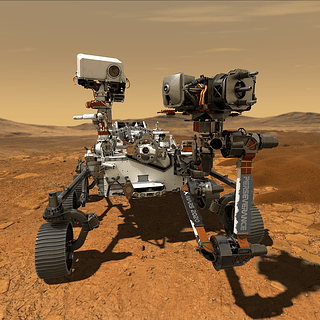From NASA, Andrew Good
Two pictures of the night sky were combined to reveal Venus and Earth as viewed on June 5, 2020, the assignment’s 2,784 th day, or sol. The planets appear as pinpoints of light owing to a combination of dust and space from the atmosphere. Credit: NASA/JPL-Caltech
NASA’s Curiosity Mars rover stops to stargaze. It captured a snapshot at Venus and Earth from the night sky of the Red Planet.
Curiosity aimed Mastcam, or at its Mast Camera, at the heavens about 75 minutes on June 5, 2020, the 2,784th Martian day, or sol, of this assignment. A twilight panorama reveals Venus from the other and Earth in one frame. Both planets seem owing to a combination of dust and space they would normally look like stars that are really bright.
The short photo session was partially to gauge exactly the twilight brightness: Throughout this time of year on Mars, there is more dust from the atmosphere to reflect sun, which makes it particularly bright, stated Mastcam co-investigator Mark Lemmon of the Space Science Institute in Boulder, Colorado.
“Even moderately bright stars were not visible when this image of Venus was taken,” Lemmon said. “Earth also has bright twilights following some big volcanic eruptions.”
After Curiosity’s Mastcam imaged its Moon and Earth in 2014, the color and brightness of the heavens were different than from the recent pictures due to all the high-altitude dust from the Martian atmosphere right now.
At the bottom of the new graphics is the top of a rock feature named Tower Butte from the”clay-bearing unit,” which Curiosity was exploring for more than a year. Since landing in 2012, the rover has captured blue Martian sunsets and asteroids in addition to Mercury and Mars’ two moons, Phobos and Deimos, transiting across sunlight.
Two pictures of the night sky were combined to reveal Venus and Earth as observed on June 5, 2020 aboard NASA’s Curiosity Mars rover. Both planets seem as only pinpoints of light owing to a combination of dust and space from the atmosphere; they would normally look like bright stars. Credit: NASA
Explore further
Provided by
NASA
– Advertisement –
